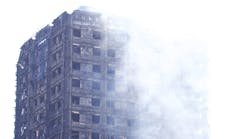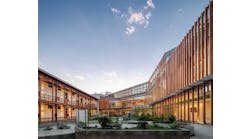As investigations have confirmed, the material that covered Grenfell Tower in White City, London was made of a highly flammable cladding, signaled by many as being the primary cause for the fire that ended in the loss of twelve people dying in the fire.
The cladding, added to the tower blocks in the 1970s, was made of cheaper, polystyrene-type cladding. To update the old cladding, new materials were fitted to the outside of the building in 2016, but the new plastic cladding was insufficient, comprised of substandard and cheap materials in an effort to save money.
The new cladding, despite not being fire proof, was touted as being "water-proof." The process of applying the rain-proof frontage can create a 25mm-30mm cavity between the cladding and the insulation behind it, between the first two layers. This gap could have also been a cause, being a sift for the fire to engulf.
“They spent £1 million on cladding the outside of the building last year,” said the lead property manager for the building in an interview with the Daily Mail. Further stating she told the council not to use the cheapest possible materials, but they accepted the lowest possible bid anyway.
There are no regulations in the U.K. that require the use of fire-redundant materials in building cladding, despite the Fire Protection Association (FPA), pushing for the government to make it a statutory requirement for local authorities and companies to use only fire-retardant material.
Jim Glocking, technical director of the FPA, says they “lobbied long and hard” for building regulations on the issue to be tightened, but no changes were made.
A fire of this size could mean total devastation for your building and its tenants. Here are a few key resources for fire prevention that you can use for your building to guard potential disaster:
The Basics of Passive Fire Protection


